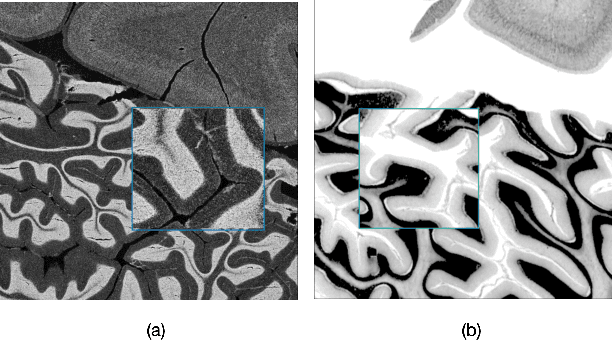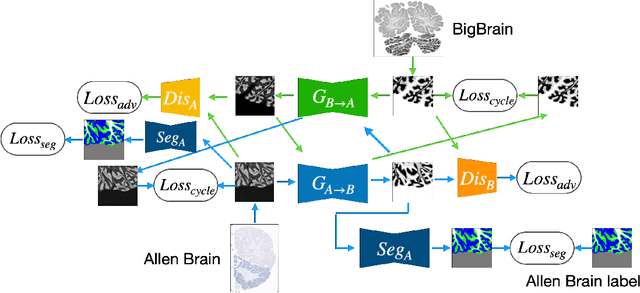Alan Evans
Confidence-Guided Unsupervised Domain Adaptation for Cerebellum Segmentation
Jun 14, 2022



Abstract:The lack of a comprehensive high-resolution atlas of the cerebellum has hampered studies of cerebellar involvement in normal brain function and disease. A good representation of the tightly foliated aspect of the cerebellar cortex is difficult to achieve because of the highly convoluted surface and the time it would take for manual delineation. The quality of manual segmentation is influenced by human expert judgment, and automatic labelling is constrained by the limited robustness of existing segmentation algorithms. The 20umisotropic BigBrain dataset provides an unprecedented high resolution framework for semantic segmentation compared to the 1000um(1mm) resolution afforded by magnetic resonance imaging. To dispense with the manual annotation requirement, we propose to train a model to adaptively transfer the annotation from the cerebellum on the Allen Brain Human Brain Atlas to the BigBrain in an unsupervised manner, taking into account the different staining and spacing between sections. The distinct visual discrepancy between the Allen Brain and BigBrain prevents existing approaches to provide meaningful segmentation masks, and artifacts caused by sectioning and histological slice preparation in the BigBrain data pose an extra challenge. To address these problems, we propose a two-stage framework where we first transfer the Allen Brain cerebellum to a space sharing visual similarity with the BigBrain. We then introduce a self-training strategy with a confidence map to guide the model learning from the noisy pseudo labels iteratively. Qualitative results validate the effectiveness of our approach, and quantitative experiments reveal that our method can achieve over 2.6% loss reduction compared with other approaches.
 Add to Chrome
Add to Chrome Add to Firefox
Add to Firefox Add to Edge
Add to Edge